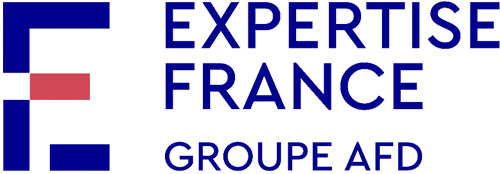Health & Gender: An application to prevent cervical cancer
Cervical cancer is one of the easiest forms of cancer to prevent and treat. Yet it is the fourth most common cancer in women worldwide. It is one of the main causes of death among women living with HIV. It is especially deadly for women who are not receiving antiretroviral (ARV) treatment or who started their treatment at a late stage. The global divide in terms of access to information, prevention and screening services for cervical cancer is responsible for the disparity in the global burden, with nine out of ten women who die from the disease living in low- and middle-income countries. This poses a major public health challenge in these contexts, with a significant impact on the economies of households and countries, and threatens the survival of families and local communities.
The SUCCESS project has decided to integrate mobile technology in secondary prevention services for cervical cancer, meaning for human papillomavirus (HPV) screening and the treatment of precancerous lesions. By reducing the barriers to access to effective new technologies, the SUCCESS programme should provide screening for some 180,000 women, including 40% living with HIV.
Digital technology at the service of women’s health
Even in advanced healthcare systems, women’s health is frequently sidelined and a number of issues remain taboo. This is largely due to a lack of specific data on women, which can lead to incorrect results and deaths that could be avoided. While both sector professionals and politicians are increasingly recognising the gender health gap and the need for more appropriate information and care, digital health has been identified as having a key role to play. Indeed, low- and middle-income countries are seeing an unprecedented increase in the number of mobile phone users and Internet access.
High-quality digital health solutions can help address the data gap on women and the fragmentation of services which affect women’s health, especially in terms of sexual and reproductive health and cervical cancer. The digitalisation of data improves data sharing, which facilitates real-time epidemiological surveillance and strengthens data quality control strategies. This helps optimise activities carried out rapidly based on the information collected. Finally, automatic text message reminders for women reduce attrition risks which are more common in traditional communication systems.
DHIS2 Tracker: An application developed by the SUCCESS project to prevent cervical cancer
In this context, the SUCCESS project has decided to integrate mobile technology into secondary prevention services for cervical cancer, meaning for human papillomavirus (HPV) screening and treating precancerous lesions. When the project started, the limits of the paper-based data system and delays in the transmission of HPV test results justified the development of a digital solution.
A specific DHIS2 Tracker application for cervical cancer has therefore been set up. It is a dynamic integrated tool for the enrolment and follow-up of the project’s women beneficiaries and interaction with them in two West African countries. It has been built based on the software used as the national health information system, called the District Health Information System 2 (DHIS 2). The DHIS2 Tracker application allows local health workers to be deployed through the use of tablets and provides a platform to send text messages to patients on appointment reminders and the availability of results.
Consequently, the DHIS2 Tracker provides a solution to the lack of data on women’s health, the fragmentation of health services and the high rate of patients lost to follow-up. It ensures the link between the initial awareness-raising and the practical application by the beneficiaries. It thereby contributes to the target objectives of the SUCCESS project, which is part of the WHO strategy to eliminate this disease by 2030.
About 100,000 women directly concerned by this programme
This data platform has a positive impact on the women followed by SUCCESS over time and on health professionals. It is estimated that over 100,000 women in West Africa will directly benefit from the solution implemented by SUCCESS via Bluesquare.
The clinical procedures will also greatly benefit from it. Health professionals will have access to all the information about patients in one place, which will facilitate patient follow-up. The platform will also improve communication between laboratories and health centres, which will now be able to consult the test results via the platform. In addition, with this solution, patients will receive reminders for their routine HPV tests.
SUCCESS will eventually ensure that the DHIS2 Tracker applications are interoperable with the population-based cancer registries, in order to measure the impact of the interventions and observe the development of the incidence, the disease stage and the survival and fatality rates. The DHIS2 Tracker will provide more effective information to the national health data system, which will serve to support advocacy activities and develop context-specific programmes and strategies to prevent cervical cancer.
|
|
|
|


